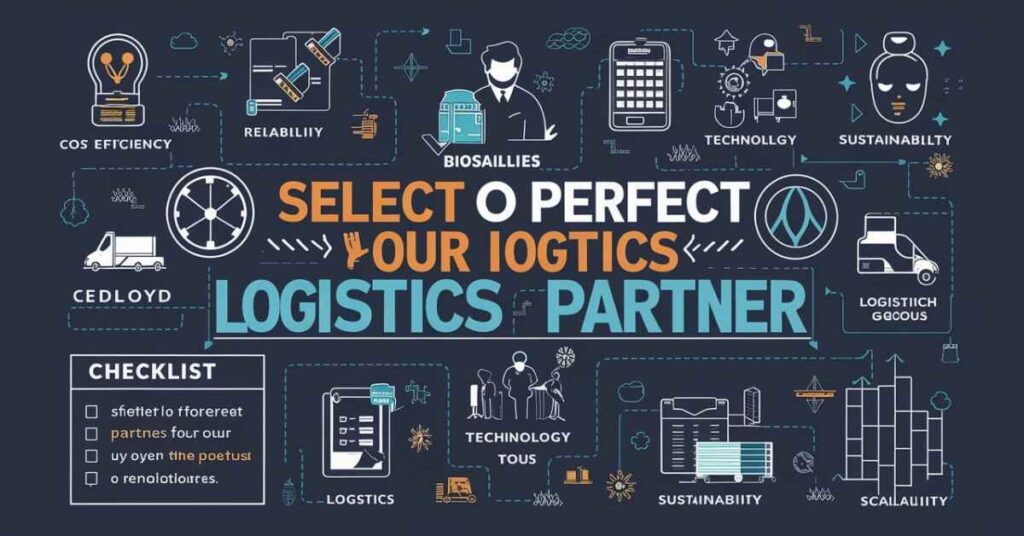As businesses strive for effective supply chain management accepting the roles of 3PL and 4PL workers has become vital. While both offer logistics solutions there are distinct variances that can significantly influence your operations.
A 3PL provider is a company that grips outsourced logistics operations including transportation warehousing distribution and other supply chain actions. These providers offer skill cost savings and scalability. It allows businesses to focus on their core capabilities while subcontracting logistics purposes.
On the other hand, a 4PL provider acts as an intermediary managing and overseeing many 3PL providers on behalf of a client. They take a holistic approach to supply chain management managing and optimizing the various logistics amenities to update operations and improve visibility.
The Role of a 3PL Provider
A 3PL (third-party logistics) supplier is a specific company that offers a variety of logistics services to industries. Their core accountabilities include:
- Transportation: Managing the movement of goods via various modes, such as trucking, air, rail, or sea freight.
- Warehousing: Providing storage facilities and inventory management services.
- Distribution: Handling the delivery of products to end customers or retail locations.
- Value-added services: Offering additional services like packaging, labeling, or light assembly.
By joining with a 3PL provider businesses can divest non-core logistics actions. It allows them to deliberate on their primary processes. This collaboration proposes several benefits including:
- Expertise: 3PLs bring specialized knowledge and experience in logistics, leveraging best practices and cutting-edge technologies.
- Cost savings: Outsourcing logistics can reduce overhead expenses associated with maintaining an in-house logistics team and infrastructure.
- Scalability: 3PLs can adapt to fluctuating demand, providing flexible solutions for businesses experiencing growth or seasonality.
What is a 4PL Logistics Provider?

A 4PL (fourth-party logistics) provider is a particular logistics partner that supervises and accomplishes multiple 3PL providers on behalf of a consumer. Unlike 3PLs which directly grip logistics operations. 4PLs act as an intermediate coordinating and optimizing the various logistics facilities provided by different 3PLs.
- Strategic planning: Developing and implementing comprehensive supply chain strategies aligned with the client’s business objectives.
- Provider selection and management: Identifying, evaluating, and managing relationships with suitable 3PL providers to meet the client’s logistics needs.
- Integration and optimization: Integrating and streamlining the operations of multiple 3PL providers, ensuring seamless collaboration and optimized processes.
- Visibility and reporting: Providing end-to-end visibility into the supply chain, as well as detailed performance metrics and analytics.
By leveraging a 4PL provider big businesses can benefit from a central approach to supply chain management enjoying advantages such as:
- Oversight and control: 4PLs offer a bird’s-eye view of the entire supply chain, enabling proactive management and decision-making.
- Streamlined operations: By coordinating multiple 3PLs, 4PLs can eliminate redundancies and optimize processes for improved efficiency.
- Continuous improvement: 4PLs continuously analyze and refine supply chain strategies, leveraging data-driven insights to drive ongoing improvements.
While 4PLs do not normally own logistics resources like transportation fleets or warehouses. They leverage their expertise and relations with various 3PL providers to deliver wide-ranging logistics solutions tailored to their clients’ needs.
Read this Blog: Your Ultimate Guide to Earning a Supply Chain Management MBA and the Jobs it can Lead To
Comparing 3PL vs. 4PL: A Closer Look
To better understand the differences between 3PL and 4PL providers let’s examine some key conflicting factors:
| Aspect | 3PL Provider | 4PL Provider |
| Asset Ownership | 3PLs may own logistics assets like trucks, warehouses, or distribution centers. | 4PLs are typically asset-light and do not own logistics assets directly. |
| Management of Logistics Providers | 3PLs self-manage their own logistics operations and resources. | 4PLs oversee and coordinate multiple 3PL providers on behalf of their clients. |
| Level of Control and Visibility | 3PLs provide visibility and control over the specific logistics services they manage. | 4PLs offer end-to-end visibility and control across the entire supply chain, integrating multiple 3PL providers. |
| Typical Pricing Models | 3PLs often charge based on specific services rendered, such as transportation rates or warehouse storage fees. | 4PLs may charge a management fee or a percentage of the overall logistics spend, encompassing the costs of multiple 3PL providers. |
While 3PLs specify in implementing specific logistics jobs. 4PLs take a more calculated and holistic approach acting as a principal supply chain orchestrator. This distinction can have significant implications for businesses. Depending on their unique requirements and the difficulty of their supply chain operations.
When to Consider a 3PL or 4PL Solution

The choice to engage with a 3PL or 4PL provider depends on various factors together with the size of your operations. The complexity of your supply chain and your in-house logistics competencies. Here are some situations where one option may be more suitable:
Scenarios where a 3PL may be more suitable:
- Focused logistics needs: If your business requires particular logistics facilities like transportation or warehousing. A dedicated 3PL provider with expertise in those areas could be a profitable solution.
- Smaller or less complex operations: For businesses with relatively honest supply chain requirements. A 3PL provider may offer enough support without the need for a more comprehensive 4PL solution.
- Existing in-house logistics capabilities: If your company already has a strong logistics team and substructure. Joining with a 3PL can complement and augment your existing capabilities.
Scenarios where a 4PL could provide more value:
- Complex, multi-faceted supply chains: If your supply chain involves multiple logistics providers, product lines, or geographical locations, a 4PL provider can help streamline and optimize these intricate operations.
- Rapid growth or expansion: As your business expands into new markets or experiences significant growth, a 4PL partner can help ensure your supply chain scales efficiently and effectively.
- Desire for comprehensive supply chain visibility: By offering end-to-end visibility across multiple logistics providers, a 4PL solution can provide valuable insights and enable data-driven decision-making.
Case Study 1: 3PL Implementation A mid-sized e-commerce retailer based in Los Angeles partnered with a 3PL provider to handle their nationwide distribution and fulfillment operations. By leveraging the 3PL’s expertise and infrastructure, the retailer was able to reduce shipping costs, improve delivery times, and scale their operations during peak seasonal periods.
Case Study 2: 4PL Implementation A global consumer electronics manufacturer with operations spanning multiple continents engaged a 4PL provider to oversee and optimize their complex supply chain. The 4PL coordinated various 3PL providers for transportation, warehousing, and last-mile delivery, enabling seamless integration and real-time visibility across all logistics activities. This streamlined approach resulted in significant cost savings, improved customer service, and enhanced agility in responding to market demands.
Choosing the Right Logistics Partner
Selecting the appropriate logistics partner whether a 3PL or 4PL provider is a critical decision that can significantly impact your supply chain performance and overall business success. Here are some key criteria to consider when evaluating potential partners:

- Industry expertise: Look for providers with a proven trial record and a deep acceptance of your specific industry’s logistics challenges and requirements.
- Technology capabilities: Assess the provider’s technological infrastructure, including their ability to integrate with your existing systems and provide real-time visibility and reporting.
- Service offerings and scalability: Ensure the provider can meet your current needs and can scale as your business grows or develops.
- Cultural fit: Evaluate the provider’s values communication style and promise to customer service to settle a seamless collective relationship.
- Performance metrics and continuous improvement: Appreciate how the provider measures and reports on key performance indicators (KPIs). Their approach to continuously optimizing processes is based on data-driven insights.
- Contingency planning and risk management: Assess the provider’s ability to alleviate risks and maintain business continuity in the face of disruptions or unforeseen events.
Once you have identified a potential partner, it’s crucial to foster a collaborative relationship from the outset. This includes:
- Clear communication of expectations and objectives: Ensure both parties are aligned on goals, service level agreements (SLAs), and performance metrics.
- Dedicated account management: Request a dedicated account manager or team to serve as the primary point of contact and advocate for your business.
- Onboarding and transition planning: Develop a detailed plan for a smooth transition, including data migration, process integration, and employee training if required.
- Regular performance reviews: Establish a cadence for regular performance reviews and open communication channels to address any concerns or opportunities for improvement.
By carefully assessing potential logistics partners and humanizing a strong long-term collaborative relationship. Businesses can effectively influence the expertise and assets of 3PL or 4PL providers to improve their supply chain operations and drive continuous success.
Conclusion
In conclusion understanding the distinctions between 3PL and 4PL logistics providers is crucial for businesses aiming to optimize their supply chain management. A 3PL provider typically offers specialized services such as transportation, warehousing, and distribution acting as an outsourced logistics partner. They enhance operational efficiency and flexibility while managing specific logistics functions.
On the other hand, a 4PL provider functions as a higher-level integrator, overseeing the entire supply chain on behalf of the client. They coordinate multiple 3PLs and other service providers, offering comprehensive solutions that optimize the entire logistics network. This model emphasizes strategic oversight leveraging technology and data analytics to drive continuous improvements in supply chain performance.
Choosing between 3PL and 4PL depends on factors like the complexity of logistics needs, desired level of control and strategic objectives. While 3PLs offer tactical advantages and operational efficiencies 4PLs provide holistic solutions and strategic insights that can transform supply chain dynamics.


![Find a Section 8 houses for rent with no deposit Revealed! [2024]](https://busslirra.com/wp-content/uploads/2024/08/Find-a-Section-8-houses-for-rent-with-no-deposit-Revealed-2024-300x157.jpg)







![Find a Section 8 houses for rent with no deposit Revealed! [2024]](https://busslirra.com/wp-content/uploads/2024/08/Find-a-Section-8-houses-for-rent-with-no-deposit-Revealed-2024-150x150.jpg)
